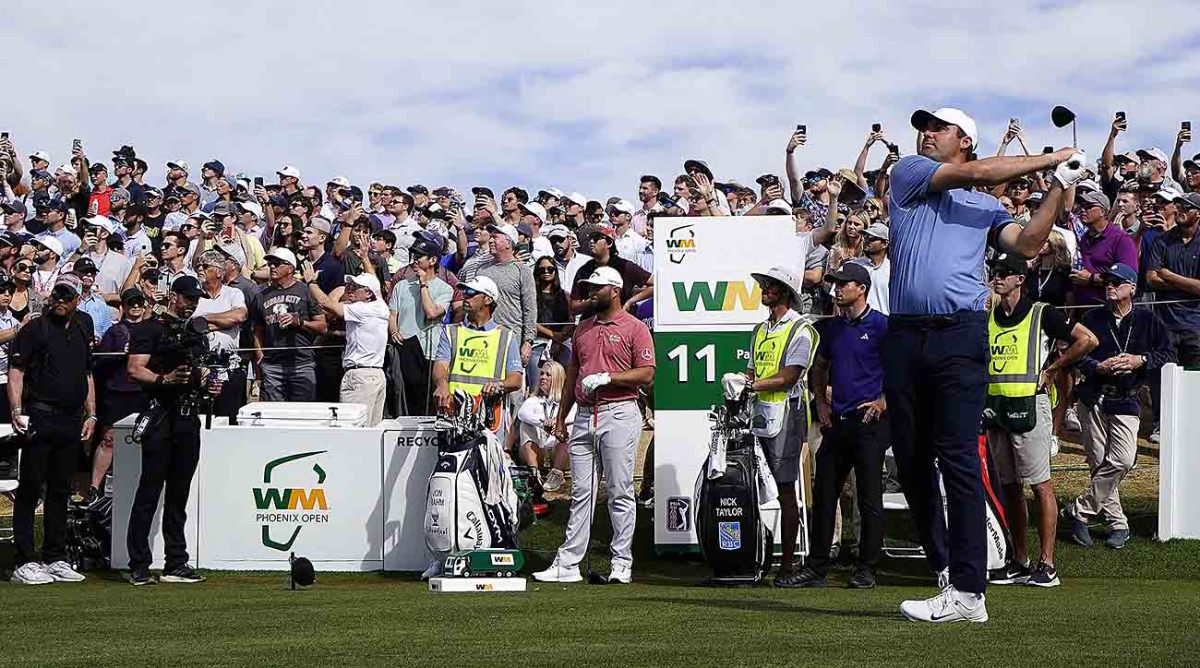PGA Tour Stars Are Playing for Bigger Bucks, Just Don't Expect to Hear About It on TV
Scottie Scheffler’s victory at TPC Scottsdale came with a whopping haul of $3.6 million—$2.1 million more than he received for winning the same tournament last year. Not that either paycheck will convince a man to show up at the grocery store with a pocketful of coupons, but during Scheffler’s march toward claiming the Tour’s first full-field “designated event,” it became rather clear that Camp Ponte Vedra isn’t keen on publicizing the size of its massive new purses.

CBS made scant mention of the $20 million in prize money throughout the week, an extension of the Tour’s insistence that performance is measured in FedEx Cup points, not earnings. Frank Nobilo referenced the winner’s share at 5:25 Sunday afternoon—about 30 minutes before the tournament ended. Dottie Pepper quickly followed up with a comment about the $20 million, and just like that, the subject of fiscal reward was a speck in the rear-view mirror.
You’d think the Tour would be proud of the gigantic financial commitment it recently made to its players, if only as a form of public persuasion in its dollar-driven brawl with the marauding Saudis. Despite employing a department full of beancounters who have worked long and hard to prove that leaping to LIV Golf isn’t much more lucrative than sticking with the trusty incumbent, those eye-popping signup bonuses offered by the Tour’s bitter rival remain the snazziest numerical element to this entire skirmish.
Maybe Jay Monahan doesn’t like standing in line when he goes to the bank. Scheffler? He has no ax to grind, just a deposit slip suitable for framing. As for the Tour’s adoption of the word “designated” to differentiate the 11 fiscally infused tournaments from those left stranded in the low-rent district, it’s a thinly veiled attempt to downplay the growing separation between the haves and have-nots. “Elevated” is a bit too strong. “Elite” or “premier” are just downright mean.
And so “designated” takes the money out of it, even as the front office dumps millions upon millions into it. We’ve officially entered an era where strength of field and prize money are one and the same. The fortunate and forsaken now compose two tours in one, a risky proposition in that at least half of all events have virtually no chance of attracting the game’s biggest names.
You can blame the Saudis, stand next to Chicken Little or beg for the good old days, or you can check out the tour pros standing in line outside the soup kitchen. A lot of them don’t bring coupons to the grocery store, either.
> The common presumption was that we’d see very little of Tiger Woods this season, perhaps at the Masters, then maybe the U.S. and/or British Open, so his participation in Los Angeles this week amounts to something of a bonus. His role as official tournament host obviously has something to do with it—Woods’ presence will provide a significant boost to spectator turnout and a larger charity donation to his foundation—but this has more to do with money.
Tiger wouldn’t be bringing his clubs to Riviera if he wasn’t healthy enough to play. With that in mind, this appearance will fuel speculation that he’ll compete more often than was expected. The Players Championship and Memorial are the two likeliest possibilities, but unless Woods performs well this week, it’s hard to envision him competing even on a semi-regular basis, if there is such a thing.
Since winning the Zozo Championship in 2019, Tiger has made just 11 starts, five of them majors. His best finish during that stretch is a T38 at the 2020 Masters—he lasted all four rounds just twice. Even at age 47, even with the broken-down body, Woods has never done mediocrity, and he’s not about to tolerate it now.
Riviera, meanwhile, continues to maintain the rarest of distinctions: it is by far the place Woods has played most (13 times) without registering a victory. His best chance to win a Tour event win in his hometown came way back in 1998, when he lost in a playoff to Billy Mayfair at Valencia Country Club—Riviera was closed for renovations. Tiger finished T2 when the tournament returned to its longtime home the following year, but he withdrew after a second-round 74 in 2006 and didn’t return until 2019.
That’s a long time to hold a grudge. Woods was never a fan of Riviera’s poa-annua greens back in his prime, although he never seemed to have any trouble with the same type of putting surfaces at Pebble Beach. Not that it matters all these years later. When you’ve won 15 major titles and another 67 times at the game’s highest level, it’s easy to see how grass can become one of your best friends.
> Golf is a game of civility, its gentlemanly character embraced by a vast majority of those who play it, but that alone isn’t reason enough to denounce the behavior we see every year on the 16th hole at the WM Phoenix Open. Last Saturday’s antics were the predictable result of a situation that has become a lot more stupid than it is dangerous—spectators heaving water bottles, beverage containers and assorted forms of garbage at the green when Adam Hadwin’s tee shot stopped about a foot from the cup.
Waste management? Yeah, right. Just a sophomoric sequel to Sam Ryder’s ace at the par-3 16th in 2022, which seemingly gave everyone in attendance a license to throw stuff on the playing field. Hadwin hit a terrific shot, but it didn’t go in the hole, which makes any comparable reaction an underwhelming display of overkill. Another step in the wrong direction, perhaps, a party-pooper postulate that doubles as a source of sobering reality.
At what point is enough enough? Five years from now, will the yahoos litter the course with debris every time somebody hits the green? Never mind decorum; simple logic tells us that anyone who hurls something onto the competitive surface is crossing the line. It’s unacceptable by any reasonable standard for a number of reasons, yet one week each winter, the PGA Tour condones such shenanigans by ignoring the premise that it looks mangy, sends the wrong message and could eventually jeopardize player safety if left unpoliced.
CBS opened its Saturday telecast from TPC Scottsdale not with Jim Nantz, but with Colt Knost and Amanda Renner seated on the 16th tee, jacked up for another beerbath like a couple of kids waiting for a fight to break out in the high school cafeteria. What exactly led the network to decide that drunk and disorderly conduct at a professional golf tournament makes for good TV? Phoenix is an excellent event, and yes, the scene at the 16th offers a lively diversion from usual Tour atmosphere, which makes anyone who objects to such untoward madness sound like a leftover from the days when Phyllis Diller was popular.
That doesn’t make the promotion of jackass hijinks a good idea. To borrow a phrase that seems to grow stronger over time, we’re better than that.
